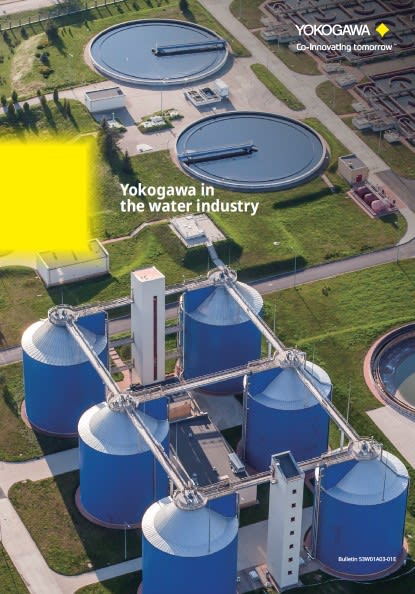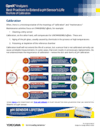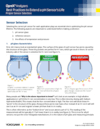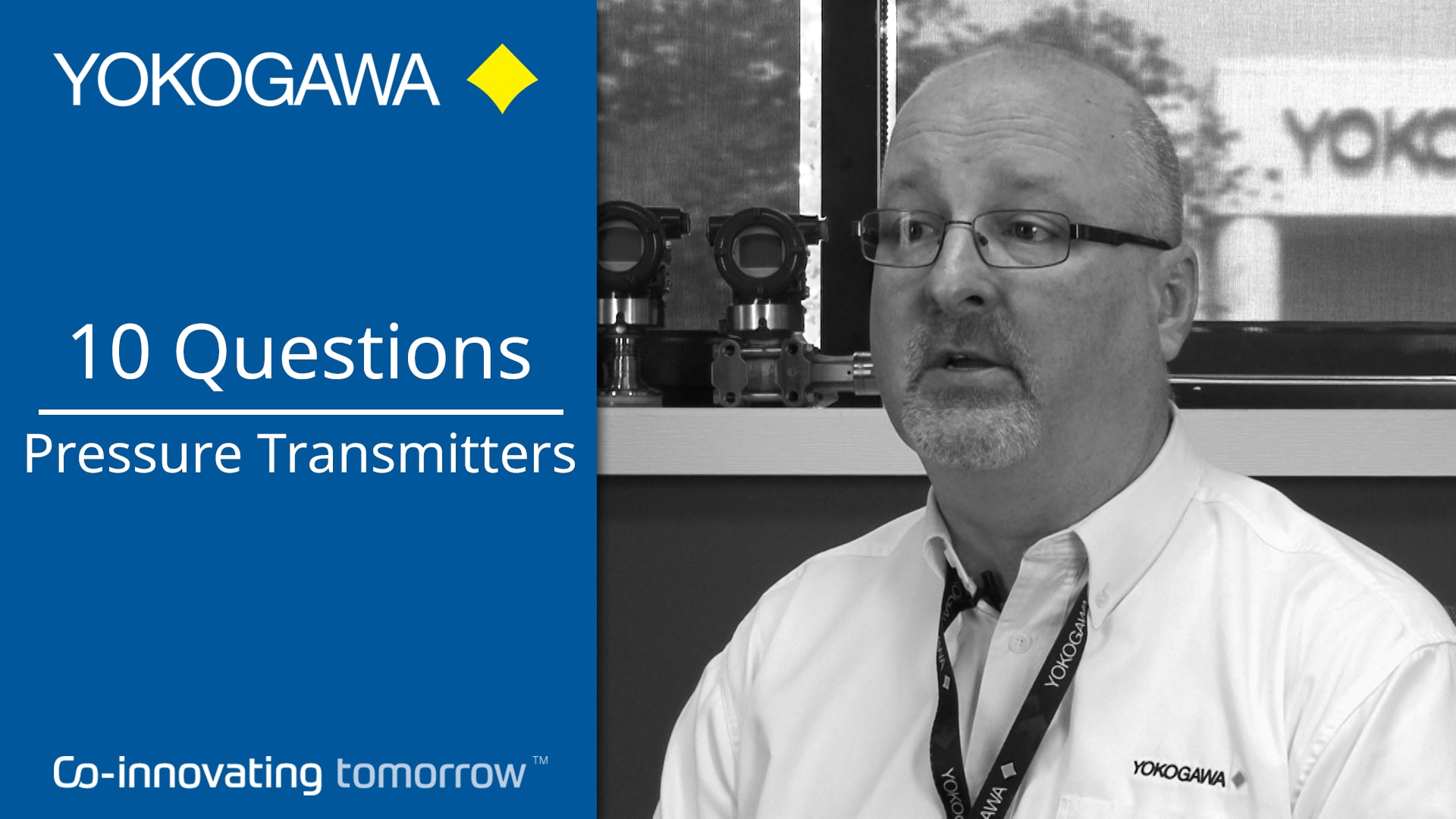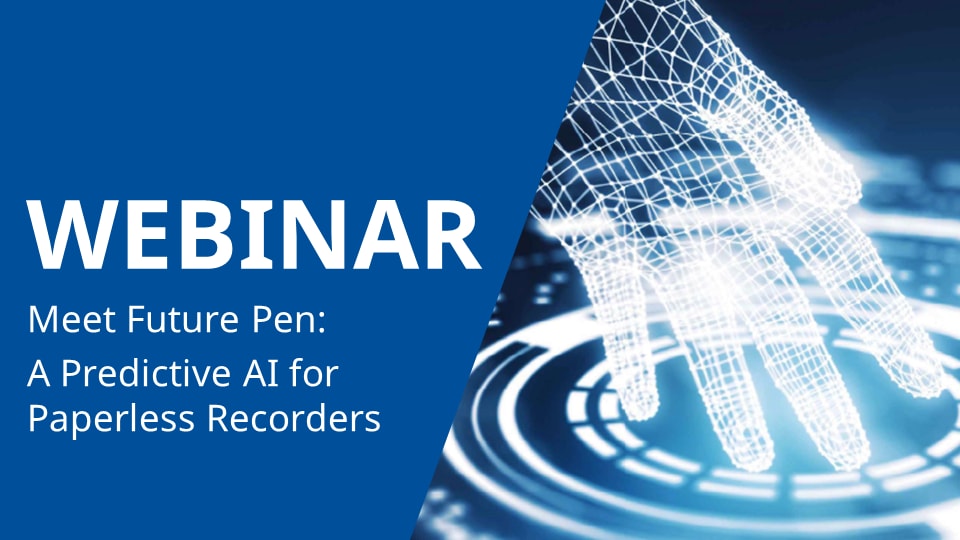The demand for seawater desalination as a stable water resource has been increasing. Yokogawa has a wealth of experience in controlling various types of desalination plant such as reverse osmosis (RO), multi-stage flash (MSF) and multi-effect distillation (MED). Yokogawa provides advanced solutions such as operator training simulators for stable plant operation.
Details
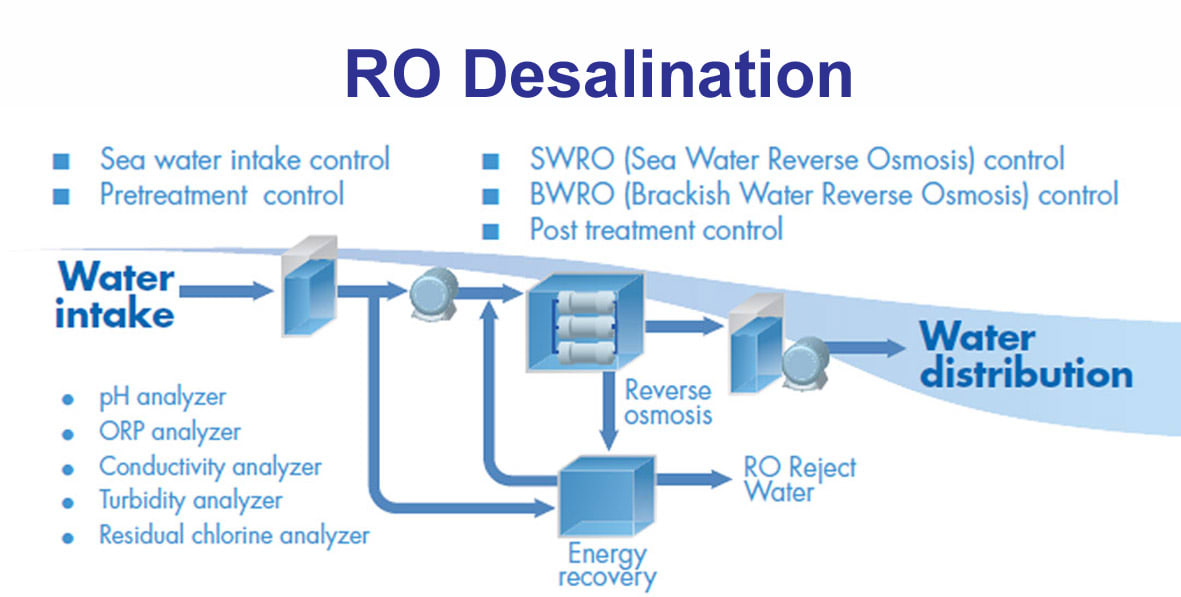
- Seawater intake control
- Pretreatment control
- SWRO (Seawater Reverse Osmosis) control
- BWRO (Brackish Water Reverse Osmosis) control
- Post treatment control
Automation products
Solution-based Software
- Operation efficiency improvement package: Exapilot
- Event analysis package: Exaplog
- Plant information management system: Exaquantum
- Plant resource manager: PRM
SCADA/PLC & RTU
- SCADA : Fast/Tools
- PLC & RTU: Stardom, FA-M3
Distributed Control System (DCS)
- DCS: CENTUM VP
Safety Instrumented System (SIS)
- SIS: ProSafe-RS
Data Acquisition & Control Equipment
- Paperless recorders : GX10/GX20, GP10/GP20, DL850E/DL850EV, XL120
- Data acquisition equipment : SMARTDAC+ GX/GP series, Daqstation series
- Temperature controller: UT Series Temperature Controllers
- Digital indicating controller: UP Series Program Controllers, UM Series Digital Indicators with Alarms
- Single-loop controllers: YS1000 Series, YS80 Series
Field Wireless
- Field wireless multi-function module: FN510
- Field wireless multi-protocol module: FN310
- Wireless differential pressure/pressure transmitter: EJX B Series
- Wireless temperature transmitter: YTA510
- Multi-input temperature transmitter: YTMX580
- Field wireless management station: YFGW410
- Field wireless access point: YFGW510
- Field wireless media converter: YFGW610
- Field wireless integrated gateway: YFGW710
- Versatile device management wizard: FieldMate
Field Instruments
- Pressure: EJX, EJA series
- Magnetic flowmeter: ADMAG series
- Vortex flowmeter: digitalYEWFLO series
- Coriolis mass flowmeter: ROTAMASS 3-series
- Ultrasonic flowmeter: US300PM, US300FM
- Temperature: YTA Series
- Level transmitter: EJX, EJA series
- Radar level meter: PULS60Y series
- Guided wave radar level meter: FLEX80Y series
- Ultrasonic level meter: SON60Y series
Liquid Analyzers
- pH/ORP analyzer: FLXA402, FLXA202, FLXA21, SENCOM Series
- Conductivity analyzer: FLXA402, FLXA202 , FLXA21
- Turbidity analyzer: TB820D, FLXA402T, TB400G
- Dissolved oxygen analyzer: FLXA402, FLXA202, FLXA21
- Chlorine analyzer: FC800D, FLXA402T
- MLSS analyzer: SS400
- Liquid density analyzer: DM8
What is the Process of Desalination?
Desalination is the removal of dissolved salts from seawater, mineralized groundwater, brackish water from inland seas, and municipal wastewater. The desalination process renders these waters safe for irrigation, industrial applications, human consumption, and other purposes. Desalination methods include thermal processes (heat transfer and phase change) and membrane processes (separating water from dissolved salt using thin, semipermeable synthetic materials).
Desalination Methods
- Distillation
- Multiple-effect distillation (MED)
- Multi-stage flash distillation (MSF)
- Vapor-compression (VC)
- Freezing desalination
- Geothermal desalination
- High grade water recycling
- Ion exchange
- Membrane processes
- Electrodialysis reversal (EDR)
- Forward osmosis (FO)
- Membrane distillation (MD)
- Nanofiltration (NF)
- Reverse osmosis (RO)
- Methane hydrate crystallization
- Solar desalination
- Solar humidification-dehumidification (HDH)
- Multiple-effect humidification (MEH)
- Seawater greenhouse
- Wave-powered desalination
Resources
- Reliable monitoring and control system of the world's first, 16" seawater reverse osmosis (SWRO) membrane desalination plant.
- Accurate measurements of the SWRO parameters with Yokogawa conductivity meters, pH meters, and magnetic flow meters contribute to a longer SWRO membrane life and reduce Total Cost of Ownership.
By understanding what causes the difficulties in pH measurements and having the proper equipment, stable and accurate pure water pH measurement can be accomplished.
Kind of. Calibration itself will not extend the life of a sensor, however, a sensor that is not calibrated properly can cause unreliable measurements - that are often misdiagnosed leading to unnecessary replacements.
Optimizing the maintenance cycle is not always straightforward. In some cases, cleaning once a week is sufficient and other processes may require every 8 hours.
Learning these four lessons will help you improve your engineering skills and most importantly extend the life of your pH sensors.
Select the correct pH glass and reference type to improve your pH sensor lifetime and you can limit or even eliminate the effects of temperature and pressure on especially the reference sensor.
The lifetime of a pH sensor has a significant impact on the overall annual costs of a pH measuring loop. Optimizing four key factors will decrease these costs and optimize process control and overall plant efficiency.
Downloads
Brochures
Videos
How much do you know about pressure transmitters? Are you accurately, quickly and reliably measuring pressure? Ultimately, the drive of any good pressure transmitter is to get an accurate, reliable pressure measurement to the data user quickly. This video gives you the answers to your basic questions about pressure and pressure transmitters.
Looking for more information on our people, technology and solutions?
Contact Us